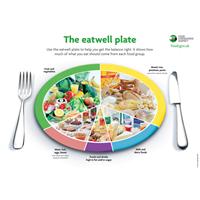
London: Many Britons are unaware how to follow a healthy, balanced diet, the official food watchdog has said.
A survey by the Food Standards Agency (FSA) suggests widespread ignorance about how much starchy food like rice, bread and pasta should be eaten.
And there is confusion over what can contribute towards the target “five a day” intake of fruit and vegetables.
Conflicting messages from different weight-loss diets could be responsible for the misconceptions, says the FSA.
Only 11% of people correctly said it was important to eat lots of starchy foods, the survey of 2,094 people found.
FSA SURVEY
* 45% realised tinned fruit and veg count towards “five a day”
* 54% correct in saying frozen fruit and veg can count
* 53% realised dried fruit count
* 73% recognised importance of eating lots of fresh fruit and vegetables
* 19% wrongly thought eating plenty of fruit and veg could “outweigh” eating fatty, sugary foods
* 58% realised foods high in fat and sugar should only be eaten occasionally
The FSA has re-designed the image it uses to show what makes up a healthy diet – the newly-designed “eatwell plate” uses photos of different foods and renames some food groups.
The organisation’s head of nutrition, Rosemary Hignett, said consumers ought to know the proportions of each food group needed for a healthy balanced diet.
“It’s not a 10-minute fad. It’s a diet for life that we know will help reduce the number of diet-related illnesses such as heart disease, stroke, diabetes and some cancers which are on the rise in the UK,” she said.
“This is about a simple, straightforward approach that allows us to enjoy a varied diet that includes foods from all groups.”
Potatoes do not count towards the target “five a day” portions of fruit and vegetables, says the FSA, but baked beans do.
A healthy, balanced diet, according to its guidelines, should be made up of:
* around one third fruit and vegetables
* one third bread, rice, potatoes, pasta and other starchy foods
* 15% milk and dairy foods
* 12% meat, fish, eggs, beans and other non-dairy sources of protein and just 8% food and drink high in fat or sugar
For more information including more details on The Eatwell Plate go to www.eatwell.gov.uk”>
